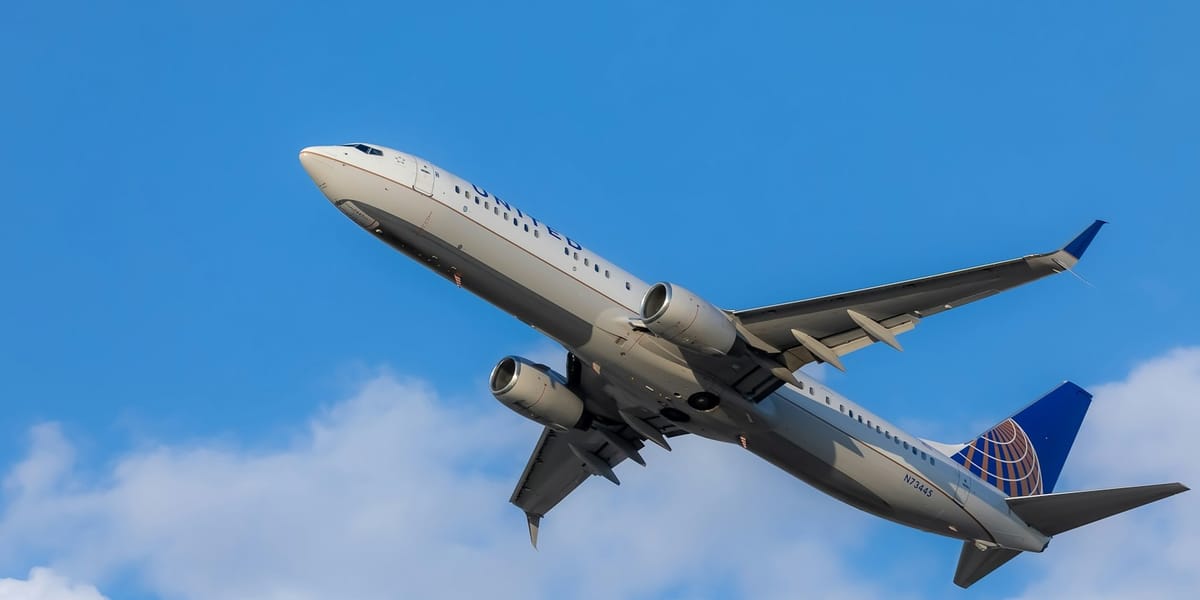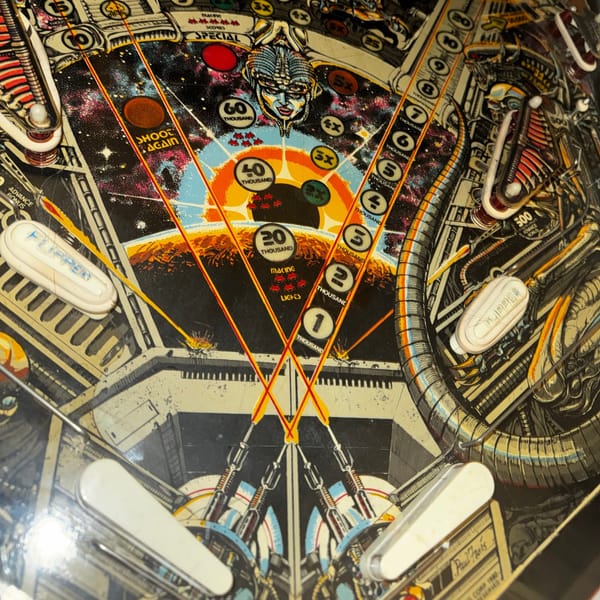Why Do Airplanes Look Like That?
The design secrets behind the world’s most recognizable silhouette

If aliens ever studied Earth from afar, there’s a good chance they’d think we worship the airplane. These sleek metal birds dart across the sky in orderly formations, leaving white streaks behind them like signatures on the heavens. But beyond their visual grace, airplanes are functional masterpieces—sculpted more by physics and economics than by aesthetics. Still, for something so marvelously complex, the silhouette of a commercial aircraft remains remarkably consistent: long cylindrical body, swept-back wings, tail fin, nose cone. Why is that?
As it turns out, every curve, angle, and protrusion on an airliner is the result of decades of engineering decisions, each one solving a problem that comes with trying to lift hundreds of thousands of pounds off the ground, push them through the sky, and land them safely. The airplane’s shape isn’t arbitrary. It’s survival, efficiency, and human-centered design all rolled into one flying fuselage.

Fuselage: Pressurization and Passenger Psychology
Start with the fuselage, the central body of the aircraft. Why a tube? Why not a cube or something more artistic?
The answer lies in air pressure. At cruising altitude, the air outside is so thin and cold that humans would pass out in minutes without pressurization. To create a safe, sealed environment, engineers build a pressurized “can” that can withstand tremendous differences in pressure between inside and out. A cylindrical shape distributes that stress evenly across its surface, minimizing weak points. Imagine squeezing a soda can versus a shoebox. The round shape wins every time.
But structural integrity is only part of the story. A long, narrow tube also aligns with passenger expectations. We like rows. We like walking down aisles. We like windows on both sides. A tube gives airlines a modular interior that scales across aircraft sizes while keeping boarding, seating, and safety operations standardized. It’s a classic case of convergent design: the best solution wins, even if it’s not the flashiest.

Wings: Lift, Efficiency, and Aerodynamic Magic
Then there are the wings—the most iconic feature of any airplane. Their placement, shape, and sweep angle are the product of some of the most meticulous aerodynamic calculations in human history.
Wings generate lift through Bernoulli’s principle and Newtonian reaction: air flows faster over the curved top surface than the flat bottom, reducing pressure above and creating an upward force. The longer the wingspan, the more lift is generated for the same amount of drag. But you can’t just make wings endlessly long. That increases weight, makes airport parking difficult, and adds structural stress.
So engineers found a sweet spot. Commercial airliners tend to have moderately long, swept-back wings. That backward angle helps reduce drag at high speeds by delaying shockwaves that form near the speed of sound. These “transonic” speeds are where most jets operate, so sweeping the wings helps them cruise more efficiently.
Modern aircraft, like the Boeing 787 Dreamliner or Airbus A350, add curved winglets or raked tips to reduce the drag caused by wingtip vortices—tiny tornados of air that swirl off the tips. These refined additions save millions of gallons of fuel annually across fleets.

Engines: From Wings to Underwing Mounts
Engines, once embedded in the fuselage or attached to the tail, now typically hang beneath the wings. Why? For one, underwing engines are easier to inspect and maintain. Ground crews don’t need to climb ladders or squeeze into tight spaces.
But the main reason is physics. Mounting engines beneath the wings lowers the center of gravity and places the weight where lift is already being generated. This helps with structural efficiency and simplifies fuel line routing, since fuel tanks are inside the wings. In the unlikely event of an engine fire, underwing mounts also allow it to fall away from the fuselage, improving safety.
There’s even an aerodynamic benefit: the engine’s location can influence airflow over the wings, sometimes improving lift-to-drag ratios. Of course, larger engines require longer landing gear, and that’s a whole separate challenge. But again, the shape of the plane adapts to the needs of its powerplant.

Tail: Stability and Control
Look at the rear of any airliner and you’ll see the tail fin and horizontal stabilizers forming a “T” or cruciform shape. This configuration exists primarily to keep the plane flying straight and level.
The vertical stabilizer (the tail fin) provides yaw stability, preventing the aircraft from fishtailing left and right. The horizontal stabilizers control pitch, helping the aircraft maintain a level nose during flight.
Some aircraft, like the Embraer E-jets or older Douglas DC-9s, have a T-tail with the horizontal stabilizer mounted on top of the fin. That shape is used in designs where engines are mounted on the rear fuselage, freeing the tailplane from engine exhaust. But it also introduces other challenges, such as potential deep stall conditions. Again, every shape is a tradeoff.
The size and angle of the tail surfaces are calculated based on the aircraft’s size, weight, and expected flight envelope. They’re less about style and more about keeping the plane under control, especially in turbulence or during crosswind landings.

Nose: Aerodynamics Meets Avionics
Airplane noses come in a few styles: pointed, rounded, even slightly bulbous. But they’re never boxy. Why? Because the nose slices through the air first. A streamlined nose reduces drag and smooths airflow across the fuselage, improving efficiency.
But there’s a hidden world inside the nose cone. It typically houses radar systems and avionics, and its shape has to accommodate that equipment while still minimizing turbulence. Some aircraft, like the Concorde, even featured drooping noses for better visibility during takeoff and landing. But most modern jets settle on a compromise between visibility, aerodynamics, and housing space for critical tech.

Windows, Doors, and the Human Element
Finally, let’s talk about what breaks up the otherwise smooth silhouette: windows and doors. These features aren’t purely structural, but they must still obey the laws of pressurization and safety. That’s why airplane windows are oval, not square—corners create stress points that can crack under repeated pressure cycles, as tragically discovered in the early days of jet travel.
Passenger doors are positioned for quick evacuation and even weight distribution, not just aesthetics. Cargo doors are designed flush with the body to preserve aerodynamics. Even the placement of the cockpit windows balances pilot visibility with the need for a reinforced front structure that can handle bird strikes or hail.
A Design That’s Always Evolving
The shape of commercial airplanes has stayed remarkably consistent over the decades because it works. But it’s also evolving quietly with each new generation. Materials like carbon fiber reduce weight without changing shape. Laminar flow control subtly alters surfaces to reduce drag. Blended wing bodies and electric vertical takeoff aircraft are starting to challenge our assumptions.
Yet, for now, the iconic silhouette of a commercial jet remains a symbol of engineering precision. It looks the way it does because we’ve spent nearly a century refining what it takes to fly safely, efficiently, and economically. Every curve has a purpose. Every line is a solution. And even if we take it for granted, the next time you look up at a plane cutting across the sky, remember: you’re seeing one of humanity’s greatest design achievements.




